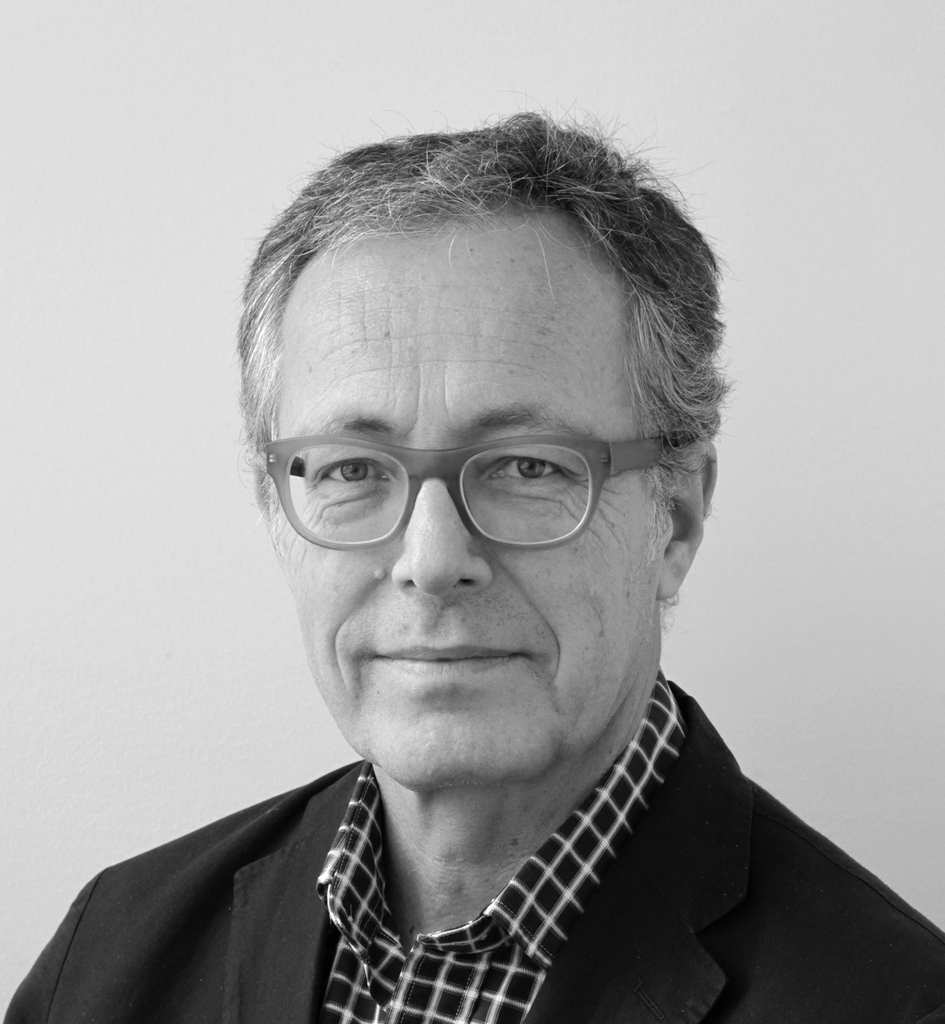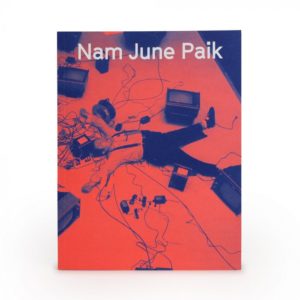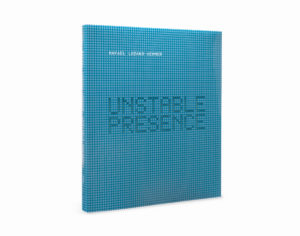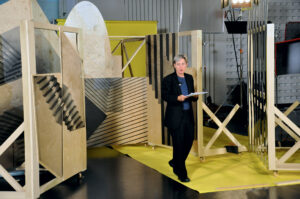A world turned loose awaits us upon entering a darkened space. Projected mechanical devices— bellows, a zoetrope, a Duchampian bicycle wheel, a row of metronomes—contract, rotate, or swing, marking time at different speeds. Time is concrete and discrete: there is Greenwich Mean Time, and there is African time. Images, in or out of sync, explode on screens all around us. Chairs placed here and there offer vantage points for viewing particular projections, or for hearing the audio feeds that play through steel megaphones, but nowhere within the installation is a viewer able to take it in in its entirety. A world revolving, spinning, breaking apart, but always profoundly alive.
William Kentridge’s art has always reworked artistic practices—drawing, filming, sculpting, performing, speaking, acting, directing. Here these multifaceted studio activities are realized in a truly collaborative manner. The Refusal of Time grew out of conversations with Harvard physicist and science historian Peter Galison and came into being with the collaboration of editor Catherine Meyburgh and composer Philip Miller, and a production team including Jonas Lundquist and set designer Sabine Theunissen. As in his complex theatrical and operatic collaborations, Kentridge casts a wide net of historical and contemporary allusions. Everything is connected, but only an artist’s mind is likely to conjure Charles Dickens’s Hard Times (1854) and Albert Einstein’s theory of special relativity (1905), the Marx Brothers’ movie Duck Soup (1933), the French anarchist who tried to blow up the Greenwich Observatory in 1894, and the twentieth-century South African resistance against the imperialist regime of time, all in the spirit of African dance.
As if this maze of cross-references and exploding trajectories on the walls needed something tangible as an anchor in its center, a kinetic sculpture, the “breathing machine” that Kentridge also calls the “elephant,” grounds the visitor in a steady rhythm, a relentless force recalling the industrial age in the presence of something other: African time, embodied. Some will take respite in this heartbeat of the work; others will relish the unchained sounds and visions around them and may rediscover long-forgotten anarchic impulses. Either way, it’s time for us to reboot and find our own time again.




